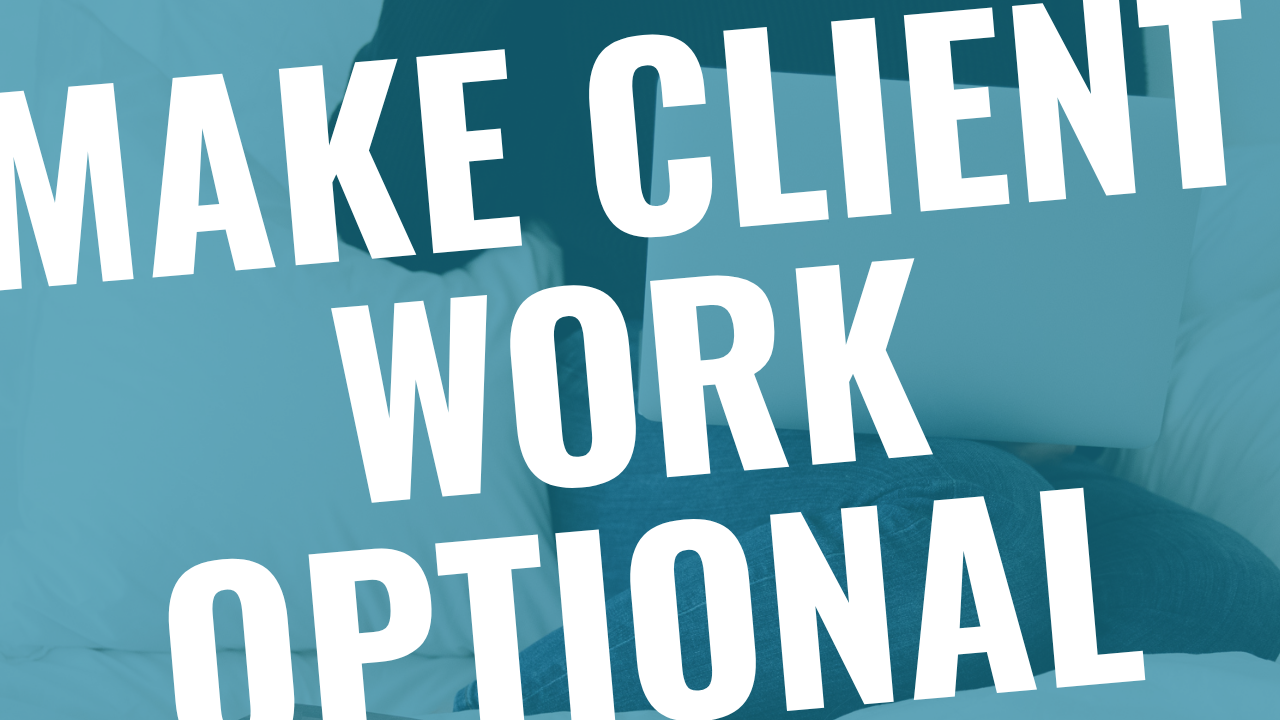From Client Work to Client-Optional: How to Design a Business That Runs Without You
You started your business for freedom… so why does it still feel like your clients run your calendar?
In this post, I’ll walk you through the exact process I used to move from client-heavy work to building a digital-product-driven business that makes money while you take a random Tuesday off.
You’ll learn how to simplify your offers, automate your systems, and design a business that finally gives you the life you meant to build in the first place.
In short: A client-optional business is one where you can still work with your favorite clients if you want, but most revenue comes from digital offers, templates, and systems that don’t require your daily involvement — giving you freedom to work on the business, not in it.
The Problem Most Service Providers Miss
Most service providers try to scale by taking on more clients, not realizing that’s the exact thing that traps them.
The goal isn’t to work more efficiently inside client work (although that’s a great start) — it’s to replace it with scalable systems.
➡️ See my free guide to mapping recurring revenue streams
Why scaling client work doesn’t create freedom
When your revenue depends entirely on billable hours, there’s no true scalability. You can raise prices, but eventually, you hit a ceiling.
Freedom comes from separating your income from hours worked. That’s where the client-optional model begins.
The Shift From “Delivering” to “Designing”
The first mindset shift is realizing your current client offer can become the prototype of your next product.
Here’s how to start that shift:
Turn your best-performing service into a framework. Document your process — what steps do you always follow?
Build a repeatable system. Record your workflow, templatize it, or turn it into a mini-course.
Automate delivery. Use tools you already rely on (ThriveCart, Kit, etc.) to handle delivery and onboarding automatically.
When you stop “doing” and start “designing,” your work compounds and every system you build becomes an asset that makes money without you.
The 3-Part LEAN Framework
L: Leverage what already works
What it means: Start with what’s selling.
Example: Convert your VIP Day outline into a self-paced course.
E: Eliminate unnecessary complexity
What it means: Simplify offers.
Example: One core offer + one logical upsell.
A: Automate repeat tasks
What it means: Use templates, SOPs, automations.
Example: Automate onboarding, delivery, follow-ups.
N: Nurture your audience
What it means: Stay top-of-mind with consistent nurture.
Example: Weekly emails → soft pitch to your digital product.
This is the foundation of a truly client-optional business that grows even while you’re offline.
How to Start: A Simple 7-Day Plan
You don’t need a massive audience or six-month runway. Here’s a fast-start plan you can follow right now:
Audit your current services.
Choose the one you’d gladly never do again — that’s your product idea.
Create a simple MVP (minimum viable product) version.
Use your existing client list to test it.
Add an automated checkout page.
Set up a 3-email mini-launch sequence.
Collect feedback, iterate, and repeat.
These seven steps turn client burnout into business leverage, one product at a time.
Ready to Make the Shift?
If you’re done being booked-out and burnt-out, it’s time to build something that works without you.
👉 Sign up to get my emails where I share more behind the scenes, resources, and offers to help you scale faster.
Resources
Each of these tools helps you simplify, automate, and scale — the same way you’re about to.

